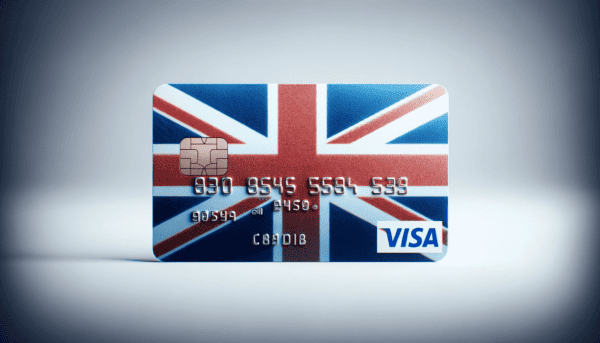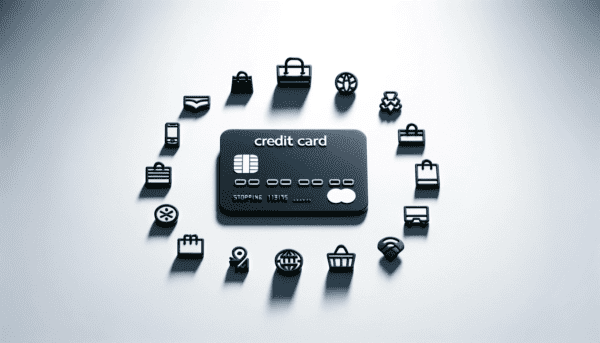In recent years, the United Kingdom has witnessed a significant increase in the use of credit cards, a trend that spans from routine purchases to niche sectors like credit card casinos. This expansion reflects a broader shift in consumer finance, where convenience and digitalisation are increasingly prioritised. The integration of credit cards into such specific domains as credit card casinos highlights their growing importance in the modern UK financial landscape.
The popularity of credit cards, particularly in these specialised areas, is a testament to their reliability and the trust consumers place in them. This confidence is built upon the pillars of security, accessibility, and flexibility, which credit cards provide, enabling users to effortlessly manage both their financial obligations and leisure pursuits. Whether navigating the dynamic streets of London or the peaceful countryside of Yorkshire, credit cards have become an essential tool for countless individuals.

Importance of credit cards in the UK’s financial landscape
Credit cards have emerged as a pivotal component of the UK’s financial ecosystem. Their significance is underscored by the soaring levels of credit card borrowing, which recently hit the highest monthly level since 2004, as reported here. This trend highlights how credit cards are not just a convenience but a necessity in modern financial management, facilitating everything from daily transactions to larger, planned expenses.
In the UK’s rapidly evolving financial landscape, credit cards offer unmatched flexibility. They empower consumers with immediate purchasing power, enabling them to navigate unforeseen expenses and manage cash flow more effectively. This flexibility is particularly vital in today’s dynamic economy, where financial agility can significantly impact personal and household financial health.
Moreover, the role of credit cards extends beyond mere transactional utility. They are instrumental in shaping consumers’ credit histories, which are crucial for securing future financial products like mortgages or loans. In this way, credit cards are more than a payment method; they are a foundational tool for building and maintaining financial stability in the UK.
The Current State of the Credit Card Market
The credit card market in the UK is a large and dynamic sector, with millions of consumers using credit cards for various purposes. In this section, we will look at some of the key statistics and trends that shape the current state of the credit card market, such as ownership rates, number of cards per person, and market share of the main providers.
Statistics on credit card ownership rates
According to the latest credit card statistics, around 33.8 million (64%) adults in the UK have at least one credit card. This is a slight decrease from 2021, when 34.5 million (66%) adults had at least one credit card. However, the number of credit cards in the UK is projected to reach 63.64 million by 2025, while the number of debit cards is forecast to exceed 108.6 million.
The credit card penetration rate, which measures the share of individuals who own a credit card, varies across different countries and regions. In Europe, the UK has one of the highest credit card penetration rates, with 64% of adults owning a credit card in 2021. This is higher than the average of 42% for the European Union, and comparable to countries such as France (65%), Germany (66%), and Sweden (68%). However, the UK lags behind some other countries in the world, such as the US (79%), Canada (83%), and Australia (87%).
Data on number of credit cards held per person
The average number of credit cards and debit cards per capita in the UK has increased over the years, reaching 1.2 and 1.6 respectively in 2022. This means that the average UK adult has more than two payment cards in their wallet. However, the number of credit cards per person varies depending on factors such as age, gender, and income level. For instance, older people tend to have more credit cards than younger people, men tend to have more credit cards than women, and higher-income earners tend to have more credit cards than lower-income earners.
The number of credit cards per person also reflects the different usage patterns and preferences of consumers. Some people may use credit cards for convenience, security, or rewards, while others may use them for borrowing, budgeting, or emergency purposes. According to a survey by Mintel, the most common reasons for using credit cards in the UK in 2022 were to spread the cost of purchases (39%), to earn rewards or cashback (36%), and to take advantage of interest-free periods (35%).
Breakdown of market share between main providers
The UK credit card market is dominated by a few major providers, who account for the majority of the credit card transactions and balances in the country. According to the latest data from UK Finance, the top five credit card issuers in the UK in 2022 were Barclaycard, Lloyds Banking Group, MBNA, HSBC, and Royal Bank of Scotland. Together, they held a combined market share of 72% in terms of credit card balances, and 68% in terms of credit card transactions.
The market share of the main providers has changed over time, as some have gained or lost customers, while others have merged or acquired other brands. For example, Lloyds Banking Group acquired MBNA in 2017, becoming the second-largest credit card issuer in the UK. Meanwhile, Virgin Money acquired Clydesdale Bank and Yorkshire Bank in 2018, forming a new challenger brand in the credit card market.
The credit card market is also influenced by the network operators, who provide the infrastructure and technology for processing credit card payments. The two main network operators in the UK are Visa and Mastercard, who together account for 99% of the credit card transactions in the country. Visa has a larger market share than Mastercard, with 60% of the credit card transactions and 62% of the credit card balances in 2022. However, Mastercard has been growing faster than Visa in recent years, increasing its market share from 37% in 2016 to 39% in 2022.
The credit card market in the UK is expected to continue to evolve and innovate in the future, as new entrants, technologies, and regulations emerge. Some of the trends that may shape the credit card market in the coming years include the rise of digital and mobile payments, the adoption of biometric and contactless authentication, the development of open banking and fintech solutions, and the impact of Brexit and the Covid-19 pandemic on consumer behaviour and preferences.
Factors Influencing Credit Card Popularity

Credit cards have become increasingly popular due to various factors, including their role as effective deposit methods for £10 casinos, economic trends, technological advancements, and the regulatory landscape.
Economic Factors
- Consumer Spending Trends: Increased consumer spending drives credit card usage.
- Interest Rates: Lower interest rates often encourage more credit card borrowing.
- Economic Stability: A stable economy boosts consumer confidence, leading to higher credit card utilization.
Technological Advancements
- Contactless Payments: Enhanced convenience and speed.
- Mobile Banking Integration: Easy tracking and management of credit card transactions.
- Security Innovations: Advanced fraud detection and prevention systems.
Regulatory Landscape
The regulatory environment also plays a crucial role. Regulations aimed at protecting consumers and ensuring responsible lending practices have shaped the way credit cards are used and perceived, influencing their popularity.
Risks and Downsides to High Credit Card Use
While credit cards offer numerous benefits, high usage can lead to significant risks and downsides. It’s crucial for consumers to be aware of these potential pitfalls to manage their finances responsibly.
- Accumulation of Debt: One of the most apparent risks associated with high credit card use is the potential for accumulating substantial debt. Credit cards typically come with higher interest rates compared to other forms of borrowing, which can lead to an escalating debt burden if balances are not paid off promptly.
- Impact on Credit Score: Excessive use of credit cards, especially if it involves maxing out credit limits, can negatively affect credit scores. High credit utilization ratios (the amount of credit used compared to the credit limit) are viewed unfavorably by credit agencies, potentially leading to lower credit scores.
- Increased Financial Stress: Managing high levels of credit card debt can be a significant source of stress. The constant worry about meeting repayment deadlines and accruing interest can have a negative impact on mental health and overall well-being.
- Potential for Financial Mismanagement: High reliance on credit cards can lead to poor financial habits, such as overspending or using credit to cover basic living expenses, which can create a cycle of dependency and financial instability.
- Vulnerability to Interest Rate Fluctuations: Credit card interest rates are often variable, making users vulnerable to rate increases. This can result in higher repayment amounts, which can be challenging to manage, especially for those already struggling with high balances.
- Fraud and Security Risks: Although credit cards offer various security features, high usage increases the exposure to potential fraud and security breaches. Unauthorized transactions and identity theft are risks that come with extensive credit card use.
Responsible credit card use involves understanding the implications of high usage, maintaining a manageable balance, and being vigilant about security and fraud prevention.
Perspectives on the Future Evolution of the Credit Card Market
The credit card market is poised for significant evolution in the coming years, shaped by technological innovation, changing consumer habits, and regulatory shifts. Here are key perspectives on its future development:
- Digital Integration and Mobile Wallets: The increasing adoption of digital wallets and mobile payment technologies is set to redefine how credit cards are used. These platforms offer enhanced convenience and security, and their integration with credit cards is likely to continue growing. This trend points towards a more seamless, digital-first approach to credit card transactions.
- Contactless Transactions: The rise of contactless payments, accelerated by the pandemic, is expected to continue. This shift not only speaks to the demand for convenience but also to a growing preference for touch-free, hygienic payment methods. Credit cards with contactless features are likely to become standard.
- Enhanced Security Features: As cyber threats evolve, so too will credit card security measures. Expect advancements in encryption technology, biometric verification (like fingerprint and facial recognition), and real-time fraud detection mechanisms to become more prevalent.
- Sustainability Focus: There’s a growing trend towards sustainability in finance. Credit cards made from eco-friendly materials, coupled with incentives for sustainable spending, could become more common as consumers and issuers become more environmentally conscious.
- Customization and Personalization: Future credit cards may offer more personalized features tailored to individual spending habits and lifestyle needs. This could include customizable rewards programs, spending limits, and even variable interest rates based on personal financial health.
- Regulatory Changes: The regulatory landscape will continue to evolve, likely focusing on consumer protection, data privacy, and fair lending practices. This could lead to more transparency in fees, interest rates, and credit card agreements.
- Expansion of Credit Access: Innovations in credit scoring and risk assessment may broaden access to credit. This could see credit cards reaching a wider demographic, including those previously underserved by traditional credit systems.
The future of the credit card market is likely to be characterized by greater technological sophistication, enhanced security, and a shift towards more user-friendly, sustainable, and inclusive financial products. As these trends unfold, they will undoubtedly reshape the way consumers and businesses view and use credit cards.










